


 Cultura y Aventura
Cultura y Aventura



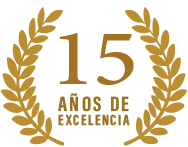
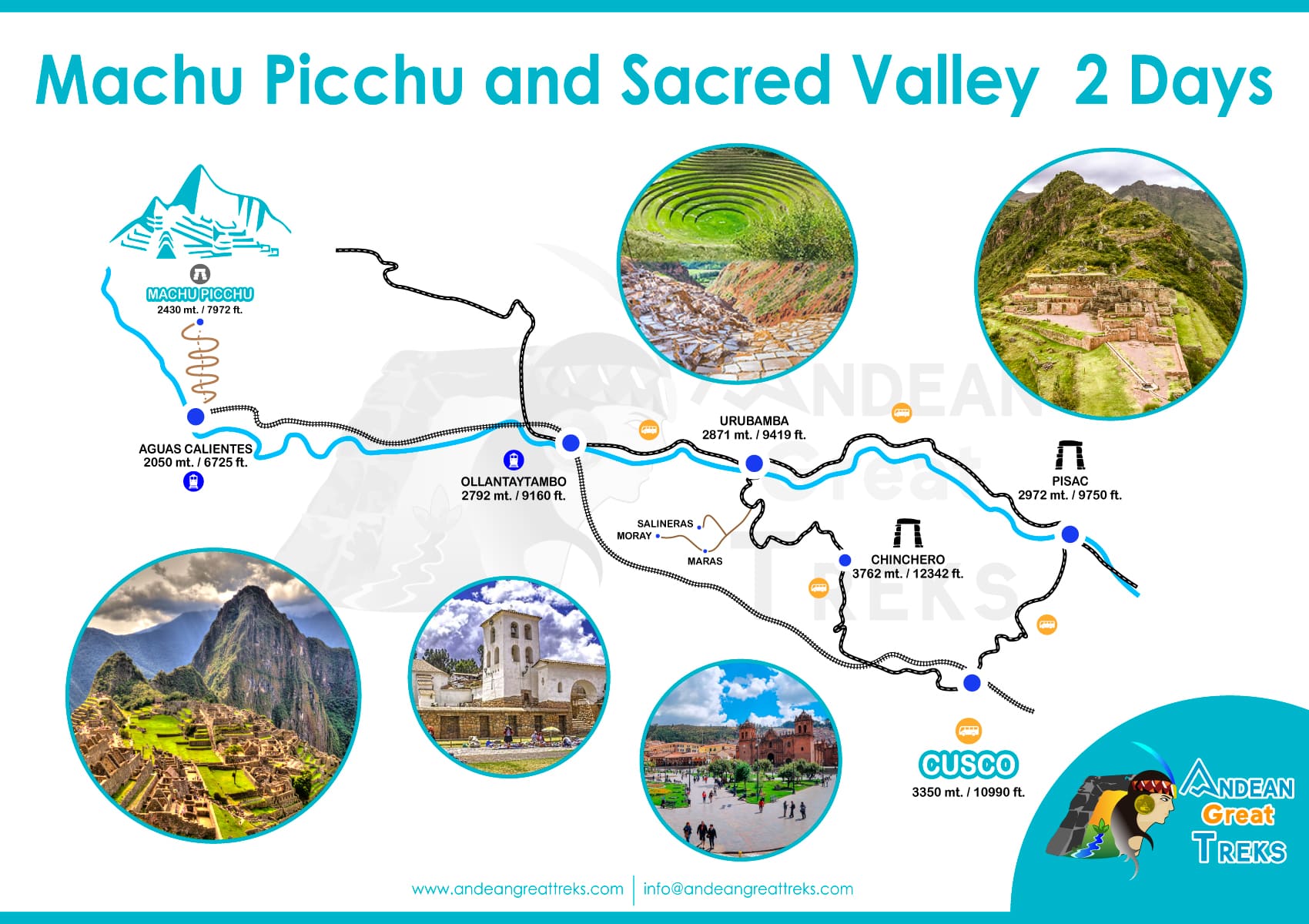
Tour a Machu Picchu, ubicado en lo alto de una montaña en medio de un bosque tropical, es considerado el mejor atractivo turístico del Perú. El santuario histórico de Machu Picchu es un lugar que cautiva a los turistas no solo por su deslumbrante belleza arquitectónica, sino también por su importante legado histórico-cultural, que lo ha llevado a ser reconocido y admirado en todo el mundo.
El Valle Sagrado de los Incas, es el mejor espacio cultural y paisajístico donde puedes caminar, y conocer más de cerca las costumbres y vida local de sus habitantes. En el tour que ofrecemos, visitarás el pueblo de artesanos de Chinchero, allí las mujeres hilanderas te mostrarán todas sus técnicas y materiales utilizados desde la época de los Incas, para crear grandes obras maestras del tejido a mano. También visitaremos el complejo arqueológico de Moray, que fue un sitio de experimentación agrícola, las famosas piscinas de sal de Maras. Y la fortaleza inca de Ollantaytambo, que es considerada una de las ciudades incas, que aún se encuentra habitada, y mantiene sus calles y canales de agua dejados por los señores incas.
RETAMA MACHU PICCHU: 1 noche
El Hotel Hotel Retama Machupicchu se encuentra ubicado, a 700 metros de las termas de Machu Picchu, es la zona más linda y tranquila del pueblo, en el Parque Wiñaywayna ubicado a tres cuadras de la estación del Ferrocarril Perú, con vista al río y al montañas; Ofrece wifi gratis y un mostrador de información turística. El alojamiento ofrece consigna de equipaje y servicio de cambio de divisa. Servicio a la habitación, TV AOC de plasma de 45 pulgadas, Agua caliente las 24 horas, Secador de pelo, Toallas para baños termales, Desayuno buffet.
Esta mañana comienza con una recogida en su hotel. La recogida tendrá lugar entre las 07:00 y las 07:20 en el vestíbulo del hotel.
En Cusco, algunas de las calles son bastante angostas y muchas tienen restricciones estrictas de estacionamiento, por lo que es probable que deba caminar un poco con un representante hasta donde está el autobús.
La primera parada luego de 40 minutos es el pueblo de Chinchero, donde se visita la plaza del Inca con sus cubiertas y terrazas. También podrás interactuar con las tejedoras de Chinchero, quienes son muy famosas por realizar uno de los trabajos textiles más bellos del Cusco. Continuamos el recorrido hacia las terrazas circulares de Moray, que en el pasado fueron utilizadas para el laboratorio agrícola de muchas especies de papas y cereales. Muy cerca se encuentra el otro atractivo, Las Salineras de Maras, que son un conjunto de miles de pozas de sal, donde la gente local extrae la sal de manera artesanal.
Al mediodía llegará al pueblo de Urubamba, que es donde tendrá una parada para el almuerzo buffet.
Luego visitará el pueblo de Ollantaytambo, que se considera la ciudad inca mejor conservada, junto con su guía visitará el sitio arqueológico de Ollantaytambo y tratará de descubrir cómo se construyeron esas terrazas o las grandes rocas que son parte de la El templo del Sol llegó al lugar donde puedes encontrarlos ahora, la cima de la montaña.
Su guía le indicará la dirección de la estación de tren donde esperará la salida de su tren que lo llevará a Aguas Calientes. (Tenga en cuenta que dependiendo de la hora de su tren, si su hora de salida es más tarde, es posible que tenga algo de tiempo para explorar la ciudad)
Un viaje en tren de 1,5 horas a través del sinuoso valle de Urubamba nos lleva a Aguas Calientes, ubicado en el bosque nuboso (2040 m sobre el nivel del mar) al pie del magnífico Machu Picchu.
A su llegada, un representante lo estará esperando para llevarlo a su hotel y darle las últimas instrucciones para su recorrido al día siguiente.
Alojamiento: Hotel en Aguas Calientes (1 noche)
Actividades incluidas:
Cusco – Paso Medio Boleto Turístico (acceso a sitios arqueológicos seleccionados,
Transporte y guía incluidos
Comidas incluidas:
Almuerzo
Este día el tour en Machu Picchu se realizará temprano por la mañana, luego de alistarnos en el hotel, tomaremos el bus a las 5:30 am. Luego de un viaje por la carretera rodeada de vegetación y vistas impresionantes a la montaña Putukusi, llegaremos al punto de acceso para el santuario sagrado de Machu Picchu.
Primero antes de pasar el control, los que deseen usar los servicios higiénicos, podrán realizarlo. Ya que dentro de Machu Picchu no existe baños, si en caso usted una vez dentro va salir para el exterior, lamentablemente no podra reingresar.
Nuestra visita a la maravilla de Machu Picchu será por el circuito número 2, ya que es uno de los más completos. En este recorrido usted podra subir a la famosa casa del guardián desde donde se tomará la foto postal de Machu Picchu, luego pasará por la puerta principal, la plaza ceremonial, la casa del inka, las fuentes ceremoniales, podrás ver el templo del sol, pero no de cerca; también se accede a la pirámide donde esta ubicado el reloj solar.
Continuando con el circuito llegaras al sector de la roca sagrada, y finalmente visitara el área urbana donde estaban las casas reales de los nobles incas, y también la sala de los espejos. Después de 3 horas de recorrido nos retiraremos junto a nuestro guía, y una vez afuera podrás consumir alguna bebida o alimento. Porque dentro del complejo está prohibido.
Luego podrás tomar el bus de bajada al pueblo de Aguas Calientes, donde tendrás tiempo suficiente para tomar tu almuerzo. A las 14:30 pm será el horario del tren de retorno hasta la estación de Ollantaytambo, donde le espera su transporte de retorno para el Cusco, llegando a las 19:00 pm aprox.
Visita de Machu Picchu:
De acuerdo con las normas de visita de Machu Picchu, todos los visitantes deben seguir una ruta predeterminada dentro del sitio. Esta ruta debe seguirse en un solo sentido y una vez iniciada la visita guiada no está permitido salir y volver a entrar en el recinto. Una vez que concluye la visita guiada, los visitantes deben abandonar el sitio y no se permite la exploración personal de Machu Picchu.
Para este viaje trate de llevar solo las cosas muy necesarias. El resto de su equipaje lo puede dejar en su hotel en Cusco. Recuerde que el clima en Machu Picchu es muy cambiante, normalmente tendrá mañanas más calurosas y un poco de frío en la noche. También es frecuente la posibilidad de lluvias durante todo el año, ya que Machu Picchu está rodeada de bosque nuboso, y muy cerca de la selva del Perú.
 Casaca
Casaca
 Bolsa de Agua
Bolsa de Agua
 Medias de Lana
Medias de Lana
 Camara
Camara
 Bufanda
Bufanda
 Kit de primeros auxilios
Kit de primeros auxilios
 zapatos de Trekking
zapatos de Trekking
 Bolsa impermeable
Bolsa impermeable
 Bastones de trekking
Bastones de trekking
 Bloqueador Solar
Bloqueador Solar
 Snack
Snack
 Sombrero para el sol
Sombrero para el sol
 Traje de Baño
Traje de Baño
 Capa de lluvia
Capa de lluvia
 Sandalias
Sandalias
 repelente
repelente
 Pasaporte
Pasaporte
 Abrigo
Abrigo
 Papel Higiénico
Papel Higiénico
 mochila
mochila
 Gorro de Lana
Gorro de Lana
 lámpara de cabeza
lámpara de cabeza
 Guantes
Guantes
 Gafas de sol
Gafas de sol
 Gorra
Gorra
 Dinero Extra
Dinero Extra
 Pantalones de trekking
Pantalones de trekking
Sabemos la importancia de su viaje a la maravilla del mundo Machu Picchu. Por eso aquí le ofrecemos toda la información posible sobre la visita al santuario sagrado de Machu Picchu. Si tienes cualquier otra duda, puedes hacerlo a través de nuestro correo.
Está ubicado en el corazón del bosque nuboso peruano dentro de la región de Cusco. La famosa Ciudadela Inca se encuentra en lo alto de una montaña a más de 2.400 metros sobre el nivel del mar.
Machu Picchu se encuentra a menos de 112 kilómetros de la ciudad del Cusco. Juntos, Machu Picchu y Cusco son los destinos turísticos más populares de América del Sur. Ubicado en la base de la montaña Machu Picchu, Aguas Calientes es el pueblo más cercano a las famosas ruinas incas. Se puede acceder al pueblo por tren desde Cusco o por el Camino Inca a Machu Picchu.
Machu Picchu es una antigua ruina inca ubicada a unas 50 millas (80 km) al noroeste de Cuzco, Perú, en la Cordillera de Vilcabamba de las montañas de los Andes. Se alza sobre el valle del río Urubamba en una silla estrecha entre dos picos afilados, Machu Picchu («Pico Viejo») y Huayna Picchu («Pico Nuevo»), a una altura de 7,710 pies (2,350 metros). Una de las pocas ruinas precolombinas importantes encontradas casi intactas, Machu Picchu fue designada Patrimonio de la Humanidad por la UNESCO en 1983.
Aunque el sitio escapó a la detección de los españoles, pudo haber sido visitado por el aventurero alemán Augusto Berns en 1867. Sin embargo, la existencia de Machu Picchu no era muy conocida en Occidente hasta que fue “descubierta” en 1911 por el profesor de la Universidad de Yale Hiram Bingham. , quien fue conducido al sitio por Melchor Arteaga, un residente local de habla quechua. Bingham había estado buscando Vilcabamba (Vilcapampa), la «ciudad perdida de los incas», desde la cual los últimos gobernantes incas lideraron una rebelión contra el dominio español hasta 1572. Citó evidencia de sus excavaciones de 1912 en Machu Picchu, que fueron patrocinadas por la Universidad de Yale. y la National Geographic Society, en su etiquetado del sitio como Vilcabamba; sin embargo, esa interpretación ya no es ampliamente aceptada. (Sin embargo, muchas fuentes aún siguen el precedente de Bingham y etiquetan erróneamente a Machu Picchu como la “ciudad perdida de los Incas”).
Posteriormente, la evidencia asoció a Vilcabamba con otra ruina, Espíritu Pampa, que también fue descubierta por Bingham. En 1964, Espíritu Pampa fue excavado extensamente bajo la dirección del explorador estadounidense Gene Savoy. El sitio estaba muy deteriorado y cubierto de bosque, pero Saboya descubrió allí restos de unas 300 casas incas y 50 o más otros edificios, así como extensas terrazas, lo que demuestra que Espíritu Pampa era un asentamiento mucho más grande.
Machu Picchu fue excavado nuevamente en 1915 por Bingham, en 1934 por el arqueólogo peruano Luis E. Valcarcel y en 1940-1941 por Paul Fejos. Descubrimientos adicionales a lo largo de la Cordillera de Vilcabamba han demostrado que Machu Picchu fue uno de una serie de pucaras (sitios fortificados), tambos (cuarteles de viajeros o posadas) y torres de señalización a lo largo de la extensa carretera inca.
Las viviendas de Machu Picchu probablemente fueron construidas y ocupadas desde mediados del siglo XV hasta principios o mediados del siglo XVI. El estilo de construcción de Machu Picchu y otras evidencias sugieren que fue un complejo palaciego del gobernante Pachacuti Inca Yupanqui (reinó c. 1438–71). Varias docenas de esqueletos fueron excavados allí en 1912 y, debido a que la mayoría de ellos fueron identificados inicialmente como mujeres, Bingham sugirió que Machu Picchu era un santuario para las Vírgenes del Sol (las Mujeres Elegidas), un grupo inca de élite. Sin embargo, la tecnología a principios del siglo XXI identificó una proporción significativa de hombres y una gran diversidad en los tipos físicos. Tanto los restos óseos como los materiales ahora sugieren a los estudiosos que Machu Picchu sirvió como retiro real. También se desconoce el motivo del abandono del sitio, pero la falta de agua puede haber sido un factor.
El alto nivel de conservación y el diseño general de la ruina son notables. Sus partes sur, este y oeste están rodeadas por docenas de terrazas agrícolas escalonadas que anteriormente estaban regadas por un sistema de acueductos. Algunas de esas terrazas todavía estaban siendo utilizadas por los indígenas locales cuando llegó Bingham en 1911. Pasarelas y miles de escalones, que consisten en bloques de piedra y puntos de apoyo excavados en la roca subyacente, conectan las plazas, las áreas residenciales, las terrazas, el cementerio, y los edificios principales. La Plaza Principal, parcialmente dividida por amplias terrazas, se encuentra en el extremo norte-central del sitio. En el extremo sureste se encuentra la única entrada formal, que conduce al Camino Inca.
Pocas de las estructuras de granito blanco de Machu Picchu tienen una mampostería tan refinada como la que se encuentra en Cuzco, pero varias son dignas de mención. En la parte sur de las ruinas se encuentra la Roca Sagrada, también conocida como el Templo del Sol (Bingham la llamó Mausoleo). Se centra en un macizo rocoso inclinado con una pequeña gruta; muros de piedra labrada rellenan algunos de sus rasgos irregulares. Sobre la roca se eleva el recinto en forma de herradura conocido como Torre Militar. En la parte occidental de Machu Picchu se encuentra el distrito de los templos, también conocido como la Acrópolis. El Templo de las Tres Ventanas es un salón de 35 pies (10,6 metros) de largo y 14 pies (4,2 metros) de ancho con tres ventanas trapezoidales (las más grandes conocidas en la arquitectura inca) en una pared, que está construida con piedras poligonales. Se encuentra cerca de la esquina suroeste de la Plaza Principal. También cerca de la Plaza Principal se encuentra el Intihuatana (Puesto de Enganche del Sol), un reloj de sol ceremonial excepcionalmente conservado que consiste en un pilar ancho y un pedestal que fueron tallados como una sola unidad y miden 6 pies (1,8 metros) de altura. En 2000, esta función se dañó durante la filmación de un comercial de cerveza. El Palacio de la Princesa es una estructura de dos niveles de cantería altamente elaborada que probablemente albergó a un miembro de la nobleza inca. El palacio del Inca es un conjunto de habitaciones con paredes hornacinas y un patio. En el otro extremo de Machu Picchu, otro camino conduce al famoso Puente Inca, una estructura de cuerdas que cruza el río Urubamba. En la región se construyeron muchas otras ciudades en ruinas, como la que se encuentra en lo alto del pico oscuro del Huayna Picchu, al que se accede por una escalera y un sendero largos y empinados; Machu Picchu es solo el más extensamente excavado de estos.
Machu Picchu es la atracción turística económicamente más importante de Perú, atrayendo a visitantes de todo el mundo. Por esta razón el gobierno peruano desea repatriar los materiales llevados por Bingham a Yale. Por lo general, se llega a las ruinas en un viaje de un día desde Cuzco tomando primero un ferrocarril de vía estrecha y luego ascendiendo casi 500 metros (1,640 pies) desde el valle del río Urubamba por un camino serpenteante. Un número menor de visitantes llega caminando por el Camino Inca. La parte del sendero desde la parada del tren “km 88” hasta Machu Picchu normalmente se recorre en tres a seis días. Se compone de varios miles de escalones tallados en piedra, numerosos muros de contención altos, túneles y otras proezas de la ingeniería clásica; la ruta atraviesa una amplia gama de elevaciones entre aproximadamente 8,530 y 13,780 pies (2,600 y 4,200 metros), y está llena de ruinas incas de varios tipos y tamaños. En Machu Picchu hay un hotel con restaurante, y los baños termales están en el pueblo cercano de Aguas Calientes. El Puente Inca y otras partes de Machu Picchu fueron dañados por un incendio forestal en agosto de 1997, pero la restauración se inició inmediatamente después. La preocupación por los daños causados por el turismo aumentó con la discusión sobre la construcción de un enlace de teleférico al sitio.
Machu Picchu se encuentra en el límite de la selva alta peruana y los Andes, a 2.430 metros sobre el nivel del mar. Las temperaturas en esta región oscilan entre 12°C y 24°C, tiene un clima cálido y húmedo predominante durante todo el día y es más frío durante la noche. La condición climática en Machu Picchu se caracteriza por dos estaciones principales:
– Temporada de Lluvias: Tiene lugar entre diciembre y abril, siendo estos los meses más lluviosos del año. Sin embargo, se espera que la temporada de lluvias haga una transición con precipitaciones moderadas entre octubre y diciembre.
– Estación Seca: Es considerada la estación más fría del año. Este período comienza en mayo y finaliza en septiembre. Se esperan días brillantes y soleados a lo largo de esta temporada.
Cabe mencionar que las condiciones climáticas en esta región pueden cambiar drásticamente. Por lo tanto, lo alentamos a conocer todo al respecto y preparar la lista de empaque perfecta de Machu Picchu antes de aventurarse a esta maravilla.
Julio y agosto es la temporada alta, cuando la mayor cantidad de visitantes realizan el Camino Inca o deambulan por Machu Picchu.
Las estribaciones de los Andes también están más secas en esta época del año, con la temporada de lluvias entre noviembre y marzo.
Preferimos visitar durante los meses secos de abril a octubre, pero vale la pena evitar el período pico de julio y agosto si no está atado a viajar en este momento.
Machu Picchu suele estar más concurrida entre las 11 a. m. y las 3 p. m., cuando llegan la mayoría de los visitantes en tren y autobús, por lo que la oportunidad de ver el sitio por la mañana o al anochecer podría permitirle tener una experiencia más meditativa y una mejor luz para la fotografía.
Tu ruta más común a Machu Picchu es volar a la capital de Perú, Lima, antes de transferirte a un vuelo interno de 1 hora y 15 minutos a Cusco.
Cusco se encuentra en la base de los Andes en el sureste de Perú. Fue la capital de los Incas y es el punto de partida para Machu Picchu y el Valle Sagrado, el corazón del Imperio Inca. Se puede llegar a Machu Picchu desde Cusco en tren o haciendo trekking.
Un pequeño pueblo, Aguas Calientes, ha surgido en el valle debajo de Machu Picchu. Sirve como punto de desembarque del tren o lugar de reunión después de haber completado el Camino Inca y descendido de Machu Picchu.
Desde las 5 a.m., los autobuses salen de aquí para viajar por el camino sinuoso cortado en la ladera de la montaña hasta las puertas de entrada de Machu Picchu.
El viaje en tren de Cusco a Aguas Calientes le ofrece la oportunidad de ver paisajes naturales espectaculares a medida que avanza a través de valles exuberantes y picos escarpados, siguiendo el curso del río Urubamba.
Hay una variedad de servicios ferroviarios, desde vagones regulares con cómodos asientos, servicios Vistadome con ventanas panorámicas hasta el lujoso tren Hiram Bingham con excelentes restaurantes y entretenimiento.
Puede dividir su viaje en el punto medio deteniéndose o pasando la noche en Ollantaytambo en el Valle Sagrado, que alguna vez fue un importante centro administrativo para los incas. Los restos de una sólida fortaleza, completa con terrazas, dominan la ciudad. Viajaría al valle por carretera y luego tomaría el tren de Ollantaytambo a Machu Picchu.
Machu Picchu se encuentra a unos 2.450 m sobre el nivel del mar y Cusco a 3.400 m. A estas alturas, hay un 20 por ciento menos de oxígeno en el aire. En la gran mayoría de los casos, los síntomas del mal de altura son muy leves (un poco de somnolencia o un ligero cansancio en la cabeza) y desaparecen después de uno o dos días, pero puede hacer que hacer algo enérgico se sienta como una lucha.
Nuestros especialistas en Perú pueden brindarle recomendaciones personalizadas sobre cómo aclimatarse antes de su viaje y combatir el mal de altura durante el mismo.
Sí, un día es suficiente para visitar la antigua ciudadela de Machu Picchu. Sin embargo, la visita se ha limitado a 4 horas por pasajero y los boletos se emiten con un tiempo de entrada determinado. Además, si estás haciendo las caminatas adicionales, tu permanencia puede extenderse de 2 a 3 horas.
No, Machu Picchu está abierto todos los días del año, incluso festivos. Sin embargo, si planea tomar el Camino Inca a Machu Picchu, tenga en cuenta que el camino está cerrado en febrero debido a mantenimiento.
Esas son las montañas que rodean a la Ciudadela Inca. Huayna Picchu se encuentra a 2.720 metros sobre el nivel del mar y ofrece una vista excepcional del sitio arqueológico, así como de varias ruinas incas a lo largo del camino.
La Montaña Machu Picchu se encuentra a 3.082 metros sobre el nivel del mar, y sirve como otro mirador al famoso santuario histórico. Sin embargo, la caminata a su cumbre es significativamente menos desafiante que la montaña Huayna Picchu.
Para caminar por cualquiera de estos montes, debe comprar un boleto de entrada adicional con mucha anticipación. Para obtener más información, póngase en contacto con su agente de viajes.
El tiempo de visita en la ciudadela de Machu Picchu es en promedio de 1 hora y 45 minutos a 2 horas, este tiempo es el máximo que se aprovecha para poder realizar el circuito principal que contiene los sitios más destacados del Santuario Histórico.
Nota: Debe saber que no hay tiempo libre para visitar por su cuenta después del guía, a menos que compre uno de los boletos de caminata extra (Huayna Picchu o Montaña Machupicchu) para poder volver a ingresar al atractivo.
Huaynapicchu:
La caminata hasta la cumbre es de aproximadamente 45 minutos, a lo largo de estrechas y empinadas escaleras incas. Una vez en la cima, se llega a ver la Ciudadela de Machu Picchu y sus colinas y valles circundantes. Este es el famoso pico en el fondo de cada icónica foto de Machu Picchu. La cumbre de Huayna Picchu siempre es un elemento destacado en la mayoría de las listas de visitantes de Machu Picchu, lo que significa que generalmente necesita reservar esta montaña con 6 meses de anticipación. Solo una cierta cantidad de personas pueden caminar por esta montaña cada día (actualmente 400). A lo largo de esta caminata, verá impresionantes vistas de las ruinas de Machu Picchu. El número limitado de boletos es una restricción establecida por el ministerio de cultura en Cusco, no por Andean Path Trek. Desafortunadamente, esto está completamente fuera de nuestras manos. Las entradas para esta montaña no son transferibles.
Montaña Machu Picchu:
La caminata a esta cumbre es de aproximadamente 1.5 hrs. Una vez en la cima, obtienes un punto de vista mucho más alto para tener una vista increíble de la Ciudadela de Machu Picchu y sus alrededores. Esta caminata es una gran alternativa al Huayna Picchu. Es ideal para aquellos que no quieren la molestia de luchar por un boleto o que no pudieron conseguir uno. Técnicamente, los espacios para la Montaña Machu Picchu también están limitados a 400 por día, así como también se venden. Simplemente necesitamos reservar un espacio cuando compramos sus boletos de entrada. Esta caminata es excelente porque también lo llevará a lo alto como Huayna Picchu, que ofrece excelentes vistas. Esta caminata tiene una pendiente más fácil (también lo hace accesible para aquellos que temen las alturas de Huayna Picchu), pero el camino es mucho más largo, lo que lo hace igual de desafiante a su manera.
Los únicos baños están ubicados en la entrada principal de la ciudadela de Machu Picchu. No hay baños dentro del complejo arqueológico.
Aguas Calientes tiene una abundante selección de restaurantes para satisfacer sus gustos y su bolsillo. Uno de nuestros favoritos actuales es Indio Feliz, un restaurante galardonado que sirve platos peruanos con un toque francés escondido en una calle lateral.
También puedes probar la comida callejera peruana si lo haces bien. Todos los domingos se venden chicharrones cocidos a fuego lento hasta que se acaban.
No, el circuito de la ciudadela Inca no es para nada desafiante. No es necesario tener un alto nivel de forma física para explorar el santuario.
¿Cuáles son los requisitos de ingreso a Machu Picchu?
Para ingresar a Machu Picchu, deberá llegar a la hora de entrada estipulada en su boleto y mostrar su pasaporte.
¿Necesito comprar la entrada a Machu Picchu con anticipación?
Sí, es muy recomendable comprar el boleto a Machu Picchu con anticipación, especialmente si viaja durante la temporada alta de turismo. Para obtener más información, comuníquese con su agente de viajes.
¿Hay un límite de edad?
No, no hay límite de edad para el ingreso al santuario histórico.
¿Debo contratar un guía para Machu Picchu?
Sí, el acompañante de un guía es obligatorio para la visita a Machu Picchu.
¿Hay alguna restricción para Machu Picchu?
Sí, para optimizar la experiencia dentro del sitio arqueológico, el gobierno peruano ha implementado las siguientes medidas:
Train ride is the most in-demand way to get to Machu Picchu, not only for the time-wise efficiency but because it goes across the Peruvian highlands, transitioning to the impressive cloud forest and its imposing mountains. Likewise, there are different types of trains and routes to reach the famous Machu Picchu town.
Where can I take the train to Machu Picchu?
There are different train stations, but this will depend on the departure point of the train ticket you’ve purchased. Here we have listed the train stations for Machu Picchu.
Which are the types of trains to Machu Picchu?
There are different types of trains and routes to reach the famous Machu Picchu town. These are the most in-demand options:
– Expedition Train: This tourist-class carriage is one of the most popular train services to get to Machu Picchu. It departs from Cusco, Ollantaytambo and Aguas Calientes train stations.
– Vistadome Train: For those looking to experience the exuberant nature of the Cusco countryside, this panoramic train offers floor-to-ceiling windows, on-board service, and typical dance shows. It departs from Cusco, Urubamba, Ollantaytambo, and Aguas Calientes train stations.
– Sacred Valley Train: This is one of the most luxurious train rides to get to Machu Picchu. Travel through time in these 1920s-style wagons and experience the best of the Urubamba valley and the Peruvian high jungle.
Can I choose seats on train trips?
Unfortunately, Peru Rail or Inca Rail (the railway company) does not allow passengers to choose seats on any of their different types of train. The distribution of these is done automatically by the company’s system.
Are there luggage limits for the trains?
Bags that weigh more than 5kg are not allowed on the train or in the Archeological Site of Machu Picchu. Therefore, you must leave your large luggage in the storage service of your accommodation.
For your trip to Machu Picchu, we highly recommend you to carry a light backpack with just the essentials for your comfort.
There are only a couple of ways to get to Machu Picchu from Cusco: or travel the Inca Trail for 4 days; or cross the Sacred Valley of the Incas, on one of the world’s most incredible short train journeys, to Aguas Calientes Machu Picchu (town).
In Ollantaytambo you must board a train to Aguas Calientes (Machu Picchu town).The train takes about 2 hours and tickets have to be booked in advance.
Aguas Calientes is the name of the town at the foot of the Machu Picchu mountain where the Inca City of the same name is built. In Aguas Calientes you can take buses to the entrance to Machu Picchu. Although you can walk up, going by bus is the best option. Remember that tickets are valid only one use and have a duration of 3 days.
Yes, there are ATMs in Aguas Calientes. The only thing to care about is to know how much money the bank will charge a withdrawal fee or not. What is most recommended is to withdraw cash in Cusco as ATMs in Machu Picchu may not be functioning well too.
Even today the certainties about Machu Picchu are scarce. It is known that the Incas built it around 1450 and that they abandoned it a hundred years later, after the Spanish conquest. Its geographical isolation, between jungle and mountains, made it go unnoticed until 1911, when the American historian Hiram Bingham reached the ruins thanks to the local shepherds and disclosed its remains to the rest of the world. Some researchers believe that it was the resting place of the Inca royalty, others think that it housed a ceremonial center or a military fortress.
Ascending to 2,438 meters of altitude is not only rewarded with an idyllic postcard, but also a journey through time through legendary ruins.
Machu Picchu symbolized the great power of the Inca Empire. Built on the heights, at the foot of the majestic hills of Huayna Picchu and Huchuy Picchu, in the Andean mountain range, this city that was rediscovered in 1911 by the American explorer Hiram Bingham, who considered it to be a refuge for the Inca accompanied by the virgins of the Sol. It was later thought to be a military fortress and has also been seen as a unique sacred center. Although the latest investigations suggest that it was a temporary royal residence. Be that as it may, Machu Picchu, declared in 2007 as the New Wonder of the Modern World, evokes mystery and feeds the most diverse enigmas, which is reflected in its almost 200 buildings at 2,438 meters of altitude.
WELCOME TO MACHU PICCHU WITH LAMAS
After crossing the access point to this sacred city, you go up a ramp that leads to the stepped terraces that are an example of Inca art. The Incas thus maximized the scarce cultivable space and avoided landslides due to torrential rains. The greenery of these terraces and the llamas that walk through them invite you to take photos with the most iconic animal in Peru. Leaving behind the terraces, you enter the upper neighborhood, Hanan, crossing a wall that surrounded the llacta (city in Quechua).
THE ONLY CIRCULAR CONSTRUCTION IN THE CITY
Once inside, the traveler enters a stone labyrinth whose most emblematic building is the Temple of the Sun, the only circular structure in Machu Picchu. But the most surprising thing is the fact that it was built on a huge natural rock that serves as its foundation. The Inca architects took advantage of the shape of this rock to give continuity to the building by reducing the width of the blocks, which is barely noticeable. The Incas did not know the wheel nor did they have draft animals, so observing large constructions integrated into nature is a magnificent example of the skill of their architects, engineers and stonemasons.
A MEDIEVAL TOWER?
It is also known as «the tower» for its resemblance to a medieval tower. The lower part houses an enigmatic cave, full of altars and niches, which suggests that it was a place of worship. Perhaps it was the royal mausoleum where the mummy of the Inca Pachacuti rested, «the transformer of the world», who erected this city in the mid-15th century.
After climbing a few steps from the outside, you access the upper part of the Temple of the Sun where a surprisingly solid circular wall with open trapezoidal windows surrounds a large granite stone inside, a kind of altar, which at each solstice, at dawn It was illuminated by sunlight. The orientation of its windows is perfectly aligned to receive the first rays of the sun at the solstices. For this reason, it is believed that, in addition to being a temple dedicated to the cult of the star king, it was also an astronomical observatory.
DEITIES AND VIEWS
In the Inca civilization, the main god was Inti, the Sun, whose rays gave sustenance and life to all beings. Temples in his honor, generally built of stone and circular in shape, were found everywhere in the Empire.
But the best thing is its location, from where you can see a beautiful sunrise over the Vilcabamba mountain range and an overwhelming view of the Urubamba river canyon and Putucusi hill.
PRINCESS OR PRIEST?
After enjoying the magnificent views from the Temple of the Sun, a few meters away, in a beautiful square, is the Ñusta Palace or Priestly House. Although he is better known by his first name, it is not known for sure what his function was. The ñusta was a princess who belonged to the panaca, or royal family, of the ruling Inca, which was made up of the coya, the main wife, the secondary wives, or concubines, and the male princes, called auquis. Each panaca had his personal servants (yanas), his own land for agriculture, and private residences. Finely worked stones of excellent quality were used for its construction, so it is believed that important members of society lived here, perhaps even the ñusta. In this two-story building, which did not communicate through the interior, niches can also be seen, which indicates that it was related to the ceremonies that were officiated in the neighboring Temple of the Sun. Therefore, it is not ruled out that it was a chapel of the temple itself. Another hypothesis is that it was a temple dedicated to the Moon. Whatever its function, in the same square shared by the two buildings stands a wall that Hiram Bingham baptized as the most beautiful of Inca architecture.
A PALACE WITH MANY LEGENDS
The royal residence, next to the house of the Ñusta and the temple of the Sun, was a set of rooms where the Inca Pachacuti and his family stayed when they visited the city. The privacy of the royal apartments was guaranteed by a wall and access was through a dark and narrow corridor that led to a bright courtyard. Many legends have arisen around this residence, such as that of a room with a chained puma, a patio where Pachacuti’s own mummy could rest, a private toilet and a magnificent garden in which the orchids competed in beauty with the magnificent views .
THREE WINDOWS FOR THREE BROTHERS
One of the most photographed and iconic buildings in Machu Picchu is the Temple of the Three Windows. It is known that there were originally five, and two of them were closed to turn them into niches or niches where queros (colored wooden vessels used in ceremonies), figurines and other utensils were placed. Many pottery remains were found, probably for rites, but it has not been possible to decipher its meaning or whether it was really a temple. What is most striking, apart from the wonderful views of the Main Square from its windows, is their large size, which is unusually large for this type of construction. This temple is related to one of the main myths about the origin of the Incas, that of the Tambotoco hill. According to legend, from this hill of three caves – which represent the three windows – Manco Cápac I, the mythical founder of the Inca Empire, and his brothers emerged. Beyond its symbolic character, linked to the founding myth, it can be affirmed that it was a wayrona-type building, with three walls, with a stone column in the center of the front, facing the Sacred Plaza. Possibly this column served as support for a beam that supported a huge sloping roof. This had to be thick and heavy to be able to withstand the heavy rains and also its strong winds.
THE PYRAMID IN FRONT OF HUAYNA PICCHU
From the Sacred Plaza, where the Temple of the Three Windows and a couple of other structures are located, starts a steep staircase skillfully carved by the Incas. This leads to the top of the Intihuatana temple, a magnificent pyramid with a stepped shape behind which the Huayna Picchu mountain rises imposingly, the quintessential icon of this sacred city.
THE ENERGY OF THE SACRED STONE
Once you reach the top, an esplanade opens up with a three-wall construction (wayrona), and in front of it, some carved rocks that imitate the shapes of the mountains opposite, as if they were real mirrors. At the highest point, on the same esplanade, stands the sacred stone, carved in one piece, whose peaks were aligned with the most important mountains. In addition, the edges of its points pointed to the four cardinal points, and during the two equinoxes, the Sun passes through the stone without leaving a shadow on it. For the Incas, stones carved in harmony with nature constituted huacas, sacred points, and there were many in the Inca Empire
PLACE NAMES ‘MADE BY’ HIRAM BIGAM
The names of the most important constructions are the fruit of the fertile imagination of their discoverer, Hiram Bingham, and this temple is no exception. The name intihuatana means in Quechua «place where the sun is tied». The North American explorer associated this stone with another similar one that he had seen in Pisac (about 30 km from Cuzco), where the Sun was symbolically tied to the stone so that it would not disappear during the shortest days of the year. Nor is it ruled out that this natural altar was a sundial, and even the scene of sacrificial rites. It seems that the Incas used flames of different colors depending on the ritual that was going to be carried out.
Today there is no exact answer as to the function of this enigmatic stone. The truth is that many of the visitors who have seen and touched it confirm that they feel a special telluric energy, which makes this place the most mystical of Machu Picchu.
THE AGORA OF MACHU PICCHU
At the foot of the Intihuatana pyramid lies the Main Square, in the center of the city, which is the natural division between the lower neighborhood, Hurín, and the upper neighborhood, Hanan. As a reflection of a highly hierarchical society, two well-defined sectors coexisted here: urban and agricultural. The upper part, in the north, corresponded to the urban sector and housed the main buildings of the ruling elite and the priestly caste, who represented spirituality, power, the nobility… The lower neighborhood, in the south, was the agricultural sector and it was formed by terraces that laid the foundations of the city and fed its inhabitants. It was sacrifice and submission to the State.
HUGE STONE WINGS
From the Main Square, and through a passageway, you reach the Temple of the Condor, located in the lower neighborhood, one of the most unique constructions. Its façade, formed by two rocks that suggest enormous open stone wings, is the element that distinguishes it from the rest of the structures. The shadows cast by these rocks also created the optical illusion of two large condor wings outstretched. In addition, just in front of the façade stands a curious stone sculpture carved in the shape of this bird, with its characteristic ring around its neck. Inside, there are some large niches that some authors believe could have been cells where prisoners were subjected to terrible punishments. Among them, that pumas and snakes ended their lives and their meat was later devoured by a condor, intervening in this punishment the three sacred animals of the Incas. In the lower part of this temple a mummy was found, so this site could also be a tomb.
The condor, that majestic bird that only lives in America, was a sacred animal and highly respected by the Incas. It represented immortality, strength and intelligence. It had the very important mission of making the Sun reborn every day because with its strength it pushed it out of the darkness providing the earth with life and fertility. Therefore, it is not surprising that there was a temple dedicated to this bird in the citadel.
CITY OF VIRGINS
Women, in this society, only had two destinies (without being able to choose): get married or enter the acllahuasi, which means «house of the chosen ones» in Quechua. It was a religious institution created by the Inca Pachacuti and was made up exclusively of women, the acllas or «virgins of the Sun» (as the Spaniards called them). They entered at the age of 8-10 years, previously selected, and were separated from their families, forcing them to take a vow of chastity and work for the State, which financed the institution. These young women, without any contact with society, were under the supervision of the mamaconas, who taught them to spin, weave and perform domestic tasks. They were also in charge of making chicha, an alcoholic beverage obtained by fermenting corn. Among their religious obligations, they had to keep the sacred fire always burning and prepare the ceremonies, of which, unfortunately, they sometimes became involuntary protagonists when they were sacrificed.
After four years of training, the Inca chose the destiny of the young women. The most beautiful became his concubines or secondary wives; they were the huayrur acllas. Others were given to warriors as a reward for their exploits on the battlefield; they were the paco acllas. Only a few remained in the acllahuasi for life, the mamaconas, who were really the virgins of the Sun. The issue of virginity was of the utmost importance since its loss was punishable by death.
THE CHOSEN WOMANS
For a time it was thought that Machu Picchu was the mythical Vilcabamba, the last refuge of the emperor Manco Inca, who fled from the Spanish along with the Virgins of the Sun. This theory of romantic overtones was due to a confusion with the human remains found when Hiram Bingham discovered the city. An osteologist on his team confirmed that the vast majority of the bodies belonged to women, based on the size of the bones. Years later, with new forensic analysis techniques, it was concluded that the skeletons were actually men and women in a percentage close to 50%. Despite this confusion, it is not ruled out that the structure baptized as the house of the Chosen by the American explorer was really the acllahuasi, since there are living spaces, a sanctuary, wayronas for work, product warehouses, and also some bowls of stone on the ground that were probably mortars where the chicha was prepared.
Machu Picchu is undoubtedly the most important tourism destination in South America. Every day, around 3000 people are arriving to visit this ancient Inca Citadel. However, there are still many questions about Machu Picchu nowadays, below find the most interesting facts about Machu Picchu.
Machu Picchu was built by Inca Pachacuti.
Peruvian culture started somewhere around 5000 B.C. Caral in the north of Lima is one of the oldest civilizations in Peru; they lived in the desert and survived trading with their neighbors while Mesopotamia, Egypt, China, and India were developing.
The Incas appear in the history line around the 1300s. Many Inca cities were built over the foundation of past civilizations like Cusco, the capital. However, no traces of earlier civilization were found in Machu Picchu. This means that the Incas were the first to arrive at these mountains. Machu Picchu was built between 1400 AD to 1500 AD. This period belongs to Pachacuti, the 9th Inca ruler, and his son Túpac Inca Yupanqui.
Machu Picchu was abandoned after the Spanish Invasion.
Despite many theories of diseases, wars, and hunger in Machu Picchu, it might have caused the people to abandon the great citadel suddenly. Nowadays, we know that Machu Picchu was still inhabited during the first years of the conquest and abandoned during the retrieve into Vilcabamba, the last capital of the Incas.
Machu Picchu was never lost.
Hiram Bingham arrives at Machu Picchu on the morning of July 24th, 1911. He found 3 families living at the first building right after the entrances: Bingham’s first guide was a little boy 11 years old named “Pablito,” he used to play inside Machu Picchu and knew the Inca city by hand, all this was documented in the first pictures taken in black and white.
Machu Picchu was not Discovered by Hiram Bingham.
When Hiram Bingham arrived in 1911, he found in the temple of the 3 windows and painting saying “Agustin Lizarraga 1902”, he was a farmer from the Santa Teresa town next to Machu Picchu. Unfortunately, he fell into the Urubamba River in 1912 and died.
Hiram Bigham is the scientific Discoverer of Machu Picchu.
Everybody agrees that Hiram Bingham did not discover Machu Picchu. However, Hiram Bingham gave scientific value, historical value and brought the attention back to this citadel. In 1913, “National Geographic” magazine published a detailed article introducing Machu Picchu and its work, revealing the great citadel.
The Inca Trail was used as a Pilgrimage path to Machu Picchu.
Machu Picchu has 2 ancient access routes: One is an easy and simple access path along the Urubamba River banks, allowing the arrival to the great citadel in just one day. The other one is the stunning Inca Trail that climbs mountains and arrives at the different temples in the mountain before arriving at Machu Picchu.
Many historians suggest that the Inca Trail to Machu Picchu had a ceremonial purpose, a hike used to prepare travelers for Machu Picchu, the Sacred Citadel. The Inca Trail might represent the first Inca King, Manco Inca’s journey when they exited the Island of the Sun in Lake Titicaca and traveled across the Mountains to Cusco valley, where they found the capital of the great empire.
Yale Returned Artifacts To Peru.
Hiram Bingham III excavated in Machu Picchu between 1912 and 1915, and the artifact found during this time left Peru under a special governmental decree. The Materials were loaned to yale University for research, and they needed to be returned. Some artifacts were returned after World War , but most of them were kept in the school.
In 2008, Peru’s government filed a lawsuit against Yale, and in 2012, after a partnership agreement between Yale University and the Univerity of Cusco, all artifacts were returned.
Machu Picchu was made earthquake-resistant.
Peru is a seismically unstable country, we are situated in the Pacific Ring of Fire, and earthquakes had flattened the cities even long before the Inca nation. Machu Picchu is also built between 2 geological fault lines. However, the Inca engineers knew that, and they built all their cities earthquake-resistant. The stones are cut so tightly that you can’t fit a needle between these spaces.
The best part of Machu Picchu is underground.
Modern engineers in Machu Picchu had estimated that 60 percent of Machu Picchu is underground constructions, and we can only see the remaining 40 percent. This doesn’t mean tunnels. The underground constructions are the drainage system and the building’s foundations on such a steep mountain top.
Machu Picchu water system is very advance.
Before building the city, Inca engineers had to plan how to bring enough water. Machu Picchu is located in the Could Forest, a warm and humid place; the reason why 60 percent of Machu Picchu is underneath is that the Incas were fighting against the humidity, against the rain, and they built the vast drainage system to exit the water from the city and avoid landslides. However, they needed to bring water to the citadel and consumption; this needed to be just enough for all living in Machu Picchu.
They decided to build a 749m long canal with 3% of inclination. There are 16 fountains to distribute the water for each neighborhood; the first one at the top was reserved for the king. This inclination allowed the water to run smoothly through the city even in the rainy season without causing any trouble.
Machu Picchu has 2 Mountains to climb.
Almost all visitors want to climb Huayna Picchu Mountain, but few people know about the other Mountain called Machu Picchu Mountain or Montaña. Huayna Picchu will sell out very fast, but you can still climb Machu Picchu Mountain that offers even greater views. Machu Picchu Mountain is the highest mountain with 3082 meters (10111 ft.). It’s important to know that Machu Picchu citadel is different from Machu Picchu Mountain.
Machu Picchu was an astronomical observatory.
Machu Picchu is considered a holy city; there are temples and sacred places all over the town.
Recent studies have shown that most of Machu Picchu’s buildings are oriented with the most important mountains around. One of the best examples is the Intihuatana Stone; the corners of this structure point to Salkantay Mountain, Pumasillo, Yanantin, and the Sungate.
Machu Picchu is divide in 2 sectors.
Machu Picchu was very well organized. The town was divided into 2 main sectors divided by a huge wall.
The agricultural sector is the first part of the terraces where Inca is used for farming maize, beans, and fruits. The terraces have an advanced drainage system.
The urban sector is divided by a tall wall; inside, there are temples, palaces, houses, and plazas. There are around 200 buildings that housed around 800 to 1000 people in total.
Machu Picchu was not destroyed by the Spaniards.
The conquistadors destroyed most Inca sites like Sacsayhuaman, Ollantaytambo, Pisaq. However, Machu Picchu was never found thanks to its hidden location, making it one of the Incas’ best-preserved archaeological treasures.
Machu Picchu has Secret Temple.
This is the Temple of the moon; unfortunately, this place is optional and allowed only to visit the early Huayna Picchu Mountain shift.
Machu Picchu also has a Local Museum located down by the bridge that crosses the Urubamba River. You will see the artifacts found in Machu Picchu and many of the first pictures taken in 1911.
Only Llamas live in Machu Picchu Today.
Machu Picchu is a protected area and a World Heritage Site since 1983. No one can live inside the citadel. However, during your visit, you will see several llamas, they are not native to the area, but they were bought to Machu Picchu to enhance the site’s beauty and trim the grass.
Machu Picchu was not finished.
The question that everybody asks is if Machu Picchu was finished. Many Inca sites in Cusco were not finished like Ollantaytambo invaded by the Spaniards, most of the rocks that the Incas were transporting to built the city were left in the trail; now, these boulders are called “Tired Stones.” The rocks were transported from far away quarries.
Machu Picchu, on the other hand, the quarry was right there, the city was completed. However, like any other modern city, it was still growing, so we see unfinished construction in Machu Picchu.
Only women lived in Machu Picchu?
Among the findings in Machu Picchu, there were around 160 skeletons, most of them were short. From this, Dr. George Eaton, the Osteologist, concluded that most of Machu Picchu’s Inhabitants were women. Bingham concluded that the site was the “temple of the Virgins of the Sun. “
Later research will prove that the amount of female and male skeletons was almost equal, and the reason why the skeleton is short because that was the average height of the Incas by that time.
Machu Picchu has only 2 season.
Machu Picchu has only 2 seasons; the wet and dry seasons.
Machu Picchu means Old Mountain.
Machu Picchu is a compound Quechua word; “Machu” means old or great, and Picchu means mountain.
Machu Picchu is not the real name.
On July 23, 1911, the expedition led by Hiram Bingham reached the small village of Mandor, near Aguas Calientes. The local farmer Melchor Arteaga told the explorers that there were many ruins in the nearby mountains. They asked the name of the site, and he said Machu Picchu.
Unfortunately, there is no record of a town with this name. Over the years, many names have been proposed like Llaqtapta, Karmenqa, etc. However, a few years ago, the historian had found writings from the first conquistador where appeared a list of the Inca Kings and the cities that each of them built. One line says Pachacuti built the Picchu, This could be the real name of Machu Picchu, and the proved that Pachacuti built this incredible city.
STEP 1
STEP 2
STEP 3
STEP 4
For Machu Picchu Tours, we recommended booking at less 1 or 2 months in advance. The government has strictly limited the number of people permitted on Machu Picchu (permits are issued to about 2500 per day). We therefore recommend that you try to make your reservation for Machu Picchu as far in or as soon as you know the dates of your international flights.
Nov, Dec, Jan: the trek permits for some departure dates were sold out 3 months in advance. we therefore recommend making a reservation at least 5 months in advance, although I am sure there will still be trek permits available for some dates 3 or 4 months in advance. Departures around Christmas and New Year tend to sell out fast.
March, April, May and June: Many trek departure dates during these months have sold out as soon as the trek permits go on sale at the beginning of January so we would recommend making a booking before the beginning of December to allow us time to process your booking.
Our company will be able to refund a part of your reservation deposit, in case you cannot complete your adventure to Machu Picchu. But this request must be sent to the company’s mail, with a minimum of 15 days before starting your Trekking. Otherwise you could be charged some administrative costs.
A very important issue to give, is that if you paid for the entire tour, and for any reason you decide to cancel the tour less than 48 hours, this can only be done under certain conditions, by your travel agent, who will inform you of the expenses that should cover.
We recommend making your reservation in advance and we will guarantee your Spaces for tours to Machu Picchu.
Each reservation needs 50% of deposit as first payment. The final balance will be paid in Cusco (On the Briefing Day).
About Payment you must choose where you would like to make the deposit:
By Pay Pal or Credit Card
First, we will send you an email to confirm your payment.
Two weeks before your tour date, we will contact you by email to request the final payment. We will also ask you where you will be staying in Cusco, to be able to pick you up on the day of your tour to Machu Picchu.
After we receive the final payment, we will send you an email confirming your tour date and informing you of important contact information for our tour agency, as well as some final tips to prepare for Machu Picchu adventure.
Once we have purchased your tickets, with your security deposit, you can only change your start date if you pay an additional amount. This amount is usually around $50 USD. The reason for this is the tickets we purchase are non-refundable and non-transferable, so we are not allowed to simply change your tour date.
Unfortunately, the 5% charge is completely out of our hands. This fee does not go to us, but to PayPal and VISA. There is really no way around it.
¿Quieres conocer en profundidad este viaje? La información esencial del viaje proporciona todo lo que necesita saber sobre esta aventura y más.
Ver Información Esencial del ViajeLa mejor época para visitar Perú es durante la estación seca, entre mayo y noviembre, cuando el clima es seco y brillante, con lluvias más frecuentes entre noviembre y abril.
 ENERO
ENERO
 FEBRERO
FEBRERO
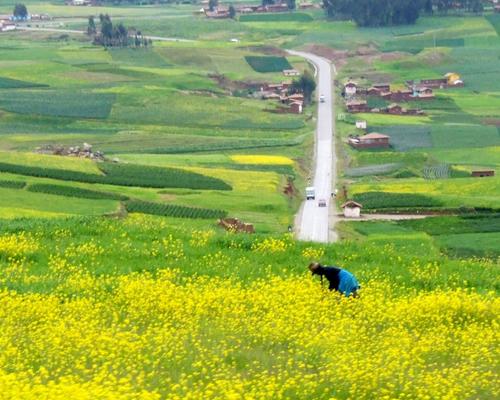 MARZO
MARZO
 ABRIL
ABRIL
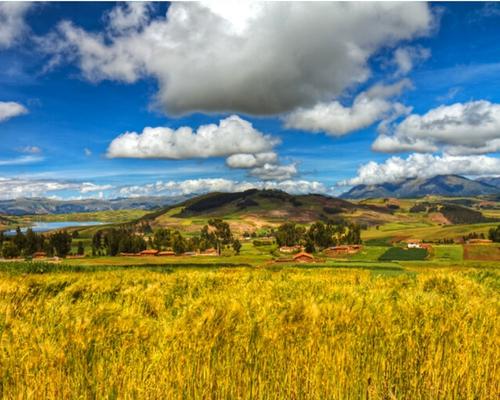 MAYO
MAYO
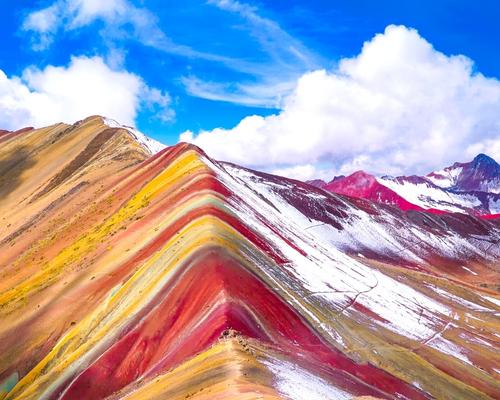 JUNIO
JUNIO
 JULIO
JULIO
 AGOSTO
AGOSTO
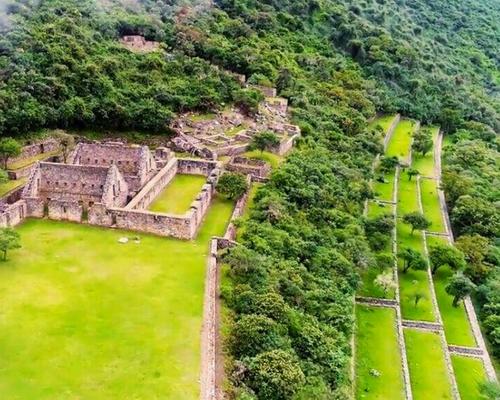 SEPTIEMBRE
SEPTIEMBRE
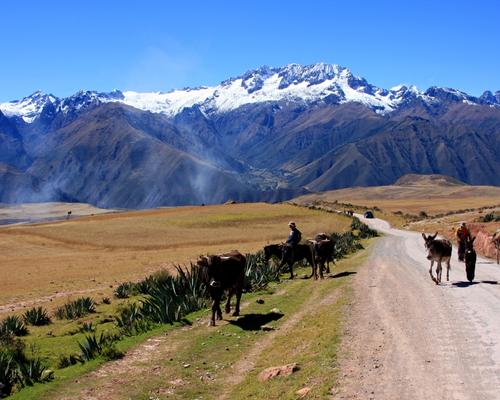 OCTUBRE
OCTUBRE
 NOVIEMBRE
NOVIEMBRE
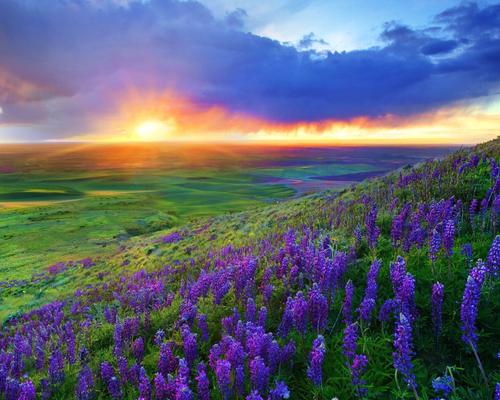 DICIEMBRE
DICIEMBRE
Para reservar este tour, se requiere un minimo de $ 200 USD por persona, el saldo restante lo pagara a su llegada a Peru, en la oficina de Cusco.
Cualquier otra informacion adicional, por favor coordinar con su agente de viajes.
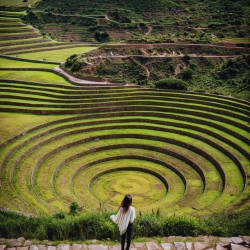
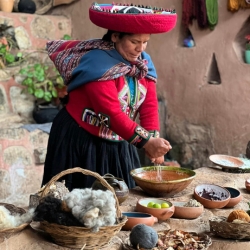
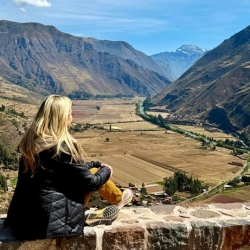
La ciudadela inca de Machu Picchu tiene una capacidad de visita de 4.500 personas diarias. Pero últimamente esta cantidad de entradas para visitar Machu Picchu es muy poca, esto se debe a la gran demanda que tiene a nivel mundial. Para ello, el gobierno de Perú ha dividido las visitas a Machu Picchu en diferentes horarios de 6:00 am a 4:00 pm.
Actualmente el santuario inca se encuentra protegido por los estándares internacionales de la UNESCO, quien ya alertó al estado peruano sobre el grave deterioro que ha venido sufriendo la maravilla de los incas. Y ante ello, ya se piensa en reducir el tiempo de permanencia en el mismo. Andean Great Treks recomienda organizar su visita a Machu Picchu con al menos 6 meses de anticipación. Porque los boletos se agotan muy rápido, y también indican que una vez que una persona logra comprarlo, ya no es posible cancelarlo o transferirlo a otra persona.
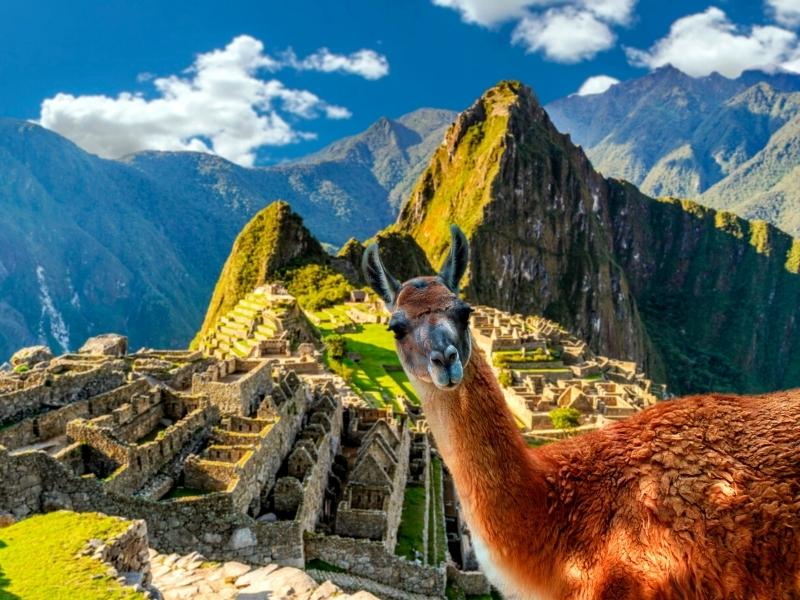
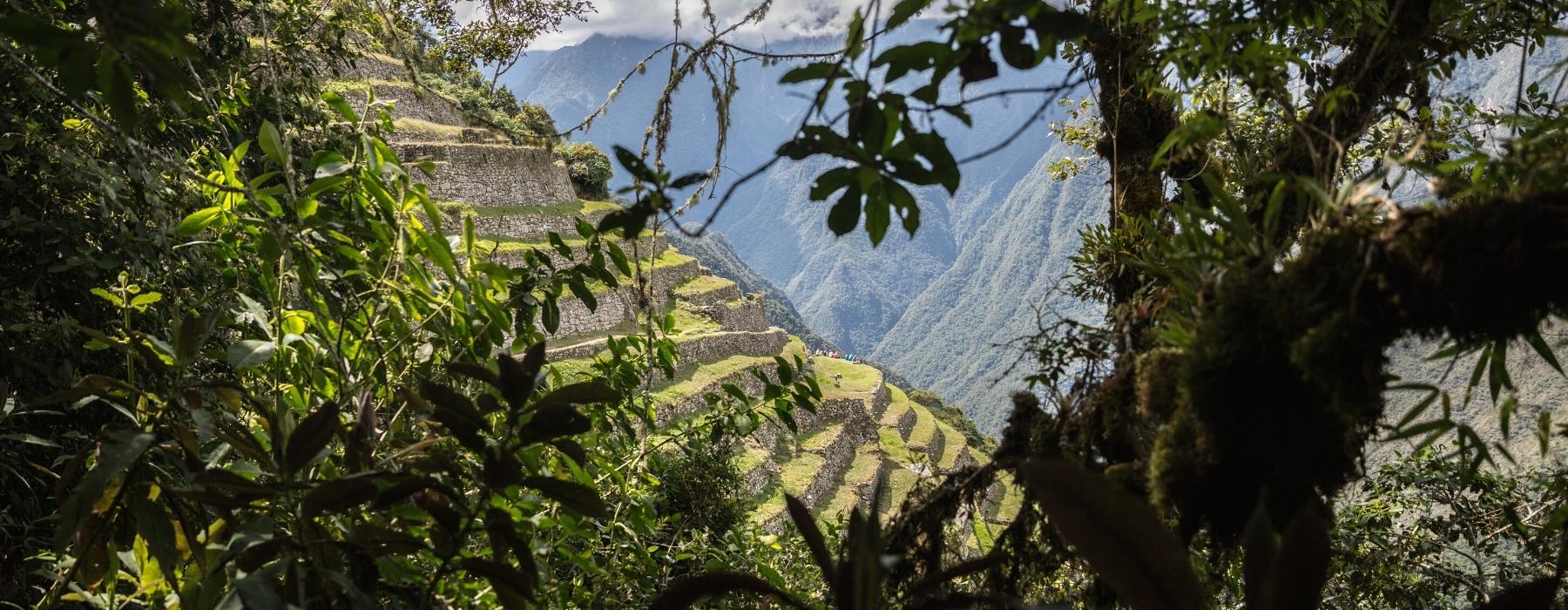
Nada lo acerca más a un país que caminar por él, y tenemos viajes para viajeros de todos los intereses.
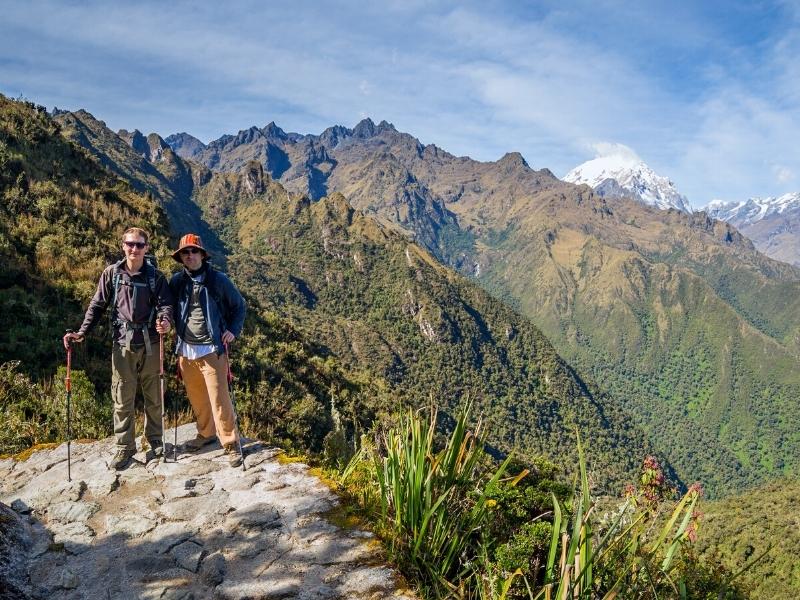
Todos nuestros tours a Machu Picchu se clasifican desde ‘Fácil’ hasta ‘Desafiante a Difícil’. En nuestros itinerarios de viaje en línea, encontrará un gráfico que muestra las distancias de caminata diarias, los tiempos e información sobre la ruta, incluido el terreno y la altitud. Por lo general, no se necesita capacitación específica, pero es posible que se sienta más cómodo si sale a caminar un par de veces antes de su viaje.

Al igual que con todos nuestros viajes, cada grupo es diferente, pero el grupo «promedio» consta de aproximadamente la mitad de parejas y la mitad de personas que viajan solas, todos compartiendo la pasión por explorar el mundo a pie. Siempre tendréis a alguien que os haga compañía en el camino, pero no siempre tenéis que caminar juntos. Siempre que sea posible, su guía turístico Andean Great Treks permitirá que todos caminen a su propio ritmo, reagrupando regularmente a lo largo de la ruta.

Perú es un país de acceso básicamente libre. La mayoría de los países de América y Europa Occidental no requieren visa de turista para ingresar al Perú, y la estadía máxima otorgada por las autoridades es de 183 días (no prorrogable). Para una estadía por un período mayor con otros objetivos (negocios, estudio, trabajo, etc.) es necesario solicitar previamente la visa correspondiente a los consulados peruanos.
Para ingresar al Perú es requisito indispensable presentar pasaporte vigente con una vigencia mínima de seis meses a partir de su ingreso al territorio nacional. Los ciudadanos de Argentina, Brasil, Paraguay, Uruguay, Ecuador, Colombia, Bolivia y Chile pueden ingresar con su documento nacional de identidad.
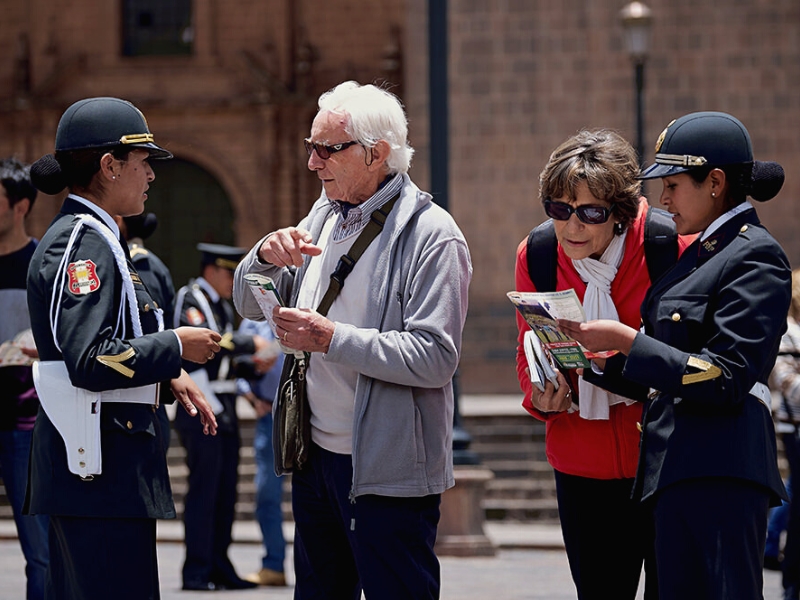
Como muchos otros países en destinos en desarrollo, la belleza y la singularidad de la región se ven contrarrestadas por la desigualdad y la falta de inversión. Esto ha llevado a que las tasas de criminalidad (principalmente robos y estafas) no sean infrecuentes en las ciudades más grandes. Sabemos que esto no suena muy atractivo, pero es importante mencionarlo de todos modos. Los visitantes más experimentados y que han viajado mucho lo entenderán bien y no se preocuparán demasiado. Sin embargo, dicho esto, es nuestro deber cuidar de usted durante su visita. Por eso te presentamos aquí algunas recomendaciones para estar más seguro. Evite caminar solo de noche en calles vacías. ¡No hagas alarde de objetos de valor! Si vas a dar un paseo o vas en transporte público, sé sensato y evita mostrar artículos caros como relojes y joyas caras. ¡Cuidado con los carteristas! No dejes tus maletas en ningún lugar que no parezca seguro y asegúrate de llevarlas contigo.
La elevación de Machu Picchu es 7,970 pies (2430 m). Esta elevación es significativamente más baja que Cusco (alrededor de 3300 pies o 1000 m), pero el mal de altura es una posibilidad al visitar Machu Picchu y Aguas Calientes. Muchas personas solo experimentan síntomas leves, como dolor de cabeza y dificultad para respirar, que generalmente desaparecen en uno o dos días.
Muchos visitantes solo pasan un día en Machu Picchu. Este es tiempo suficiente para explorar el complejo arqueológico y realizar una visita guiada, pero es un largo día de viaje cuando se tienen en cuenta todos los tramos de transporte hacia y desde Cusco o el Valle Sagrado. Es posible que desee pasar la noche en Aguas Calientes y regresar a Machu Picchu para una segunda visita. Esto le permite disfrutar de Machu Picchu más relajado y tal vez incluso hacer una caminata. Se recomienda planificar dos días en Machu Picchu durante la temporada de lluvias (diciembre a marzo) en caso de que el clima sea especialmente tormentoso uno de los días.
La montaña Huayna Picchu es la cumbre ubicada junto a la Ciudad Inca de Machu Picchu. La cima de esta montaña ofrece algunas de las vistas aéreas más espectaculares de Machu Picchu. Llegar a la cima del Huayna Picchu es una aventura increíble. Sube por un camino empinado construido en la ladera de la montaña. La mayor parte del camino será entre las paredes de la montaña y los acantilados.
En el Huayna Picchu los incas construyeron, además de cientos de escalinatas de piedra, el famoso Templo de la Luna. No se permite la entrada a menores de 12 años. No se recomienda para personas que sufren de vértigo. Limitado a 400 visitantes diarios en dos horarios de entrada (7-8 am y 10-11 am), los boletos para el Camino deben comprarse al mismo tiempo que su entrada a Machu Picchu, la ardua y vertiginosa caminata por un empinado y angosto conjunto de Las escaleras talladas por los incas hasta la cumbre y de regreso toman entre 2 y 3 horas de ida y vuelta.
La Montaña Machu Picchu se encuentra a 3.082 metros sobre el nivel del mar, y sirve como otro mirador al famoso santuario histórico. Sin embargo, la caminata a su cumbre es significativamente menos desafiante que la montaña Huayna Picchu. Para realizar la caminata en cualquiera de estos montes, se debe adquirir un boleto de ingreso adicional con mucha anticipación, el ingreso está permitido entre las 7 am y las 8 am y entre las 9 y las 10 am.
Sí, para optimizar la experiencia dentro del sitio arqueológico, el gobierno peruano ha implementado las siguientes medidas:
Hay diferentes formas de llegar a Machu Picchu. Dependiendo del tiempo que tengas y de la experiencia que estés buscando, puedes decidir entre hacer un fabuloso viaje en tren o aventurarte por un auténtico camino inca hasta la famosa Ciudadela Inca.
La enorme demanda de entradas en Machu Picchu ha provocado que se establezca un límite de personas que pueden ingresar a Machu Picchu.
Aquí está el número de boletos disponibles para cada tipo de boleto:
Boleto Machu Picchu Solo: 2,500 espacios por día.
Boleto Machu Picchu + Huayna Picchu: 400 espacios por día.
Boleto Machu Picchu + Montaña:

Cada una de las vacaciones de Andean Great Treks ha sido cuidadosamente planificada y diseñada por nuestros especialistas. Aprovechan su amplia experiencia en viajes y la orientación y la experiencia de nuestros socios locales para crear unas vacaciones magníficas. Nuestros especialistas están comprometidos a hacer que todos los aspectos sean fluidos y agradables; realmente quieren asegurarse de que las vacaciones que crean te dejen recuerdos maravillosos y duraderos.
Cada viajero de Andean Great Treks está acompañado por un guía turístico experimentado, se sumergirá en ciudades históricas, ruinas antiguas y paisajes desconocidos que cobran vida gracias a nuestros guías locales cuidadosamente seleccionados. Quieren compartir su experiencia y ayudarte a hacer tus propios descubrimientos también; su única misión es hacer que disfrutes cada momento.
Dándole la libertad de hacer que sus vacaciones sean aún más memorables. Sabemos cuánto esperan nuestros clientes sus vacaciones y nos enorgullecemos de la elección y flexibilidad que ofrecemos para mejorar cada aspecto de su experiencia. Ya sea para llegar al aeropuerto, mejorar su habitación o reservar una excursión adicional, podemos ayudarlo.
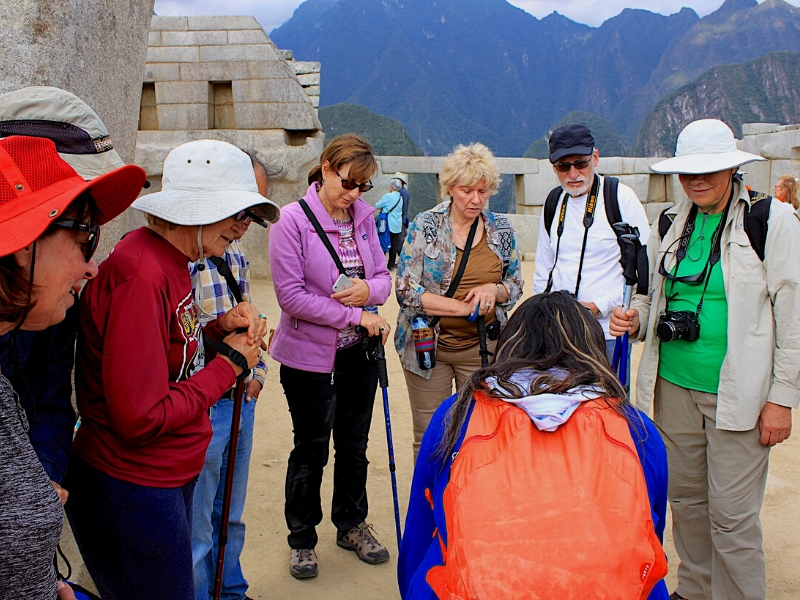
Nuestros guías son las estrellas del espectáculo; ¡Es su conocimiento, pasión y experiencia inigualables lo que transformará su experiencia de viaje de buena a verdaderamente extraordinaria!
Porque han crecido en la zona y la conocen como la palma de su mano, por lo que pueden ayudarte a experimentar los aspectos que más te interesen. Les apasiona compartir su rincón del mundo contigo y, mientras exploran juntos, te abrirán los ojos a los detalles intrincados, te brindarán antecedentes para mejorar tu comprensión de lo que estás viendo y compartirán historias que traerán todo a la vida.

“Tu inspiración para un viaje puede ser una sola palabra o un esquema muy evolucionado, pero son las conversaciones que tenemos las que nos ayudan a entender la experiencia que estás buscando. Mientras tanto, estoy recordando el tiempo que pasé en el destino.
«Lo mejor de trabajar con un especialista en Andean Great Treks es cómo toman ideas y las convierten en algo absolutamente espectacular».
Su especialista entiende que, cuando el viaje es correcto, tiene el poder de excitar sus emociones de las maneras más profundas después de todo, ese fue el efecto en ellas.
Llevan un cofre del tesoro de momentos, capturados en muchos viajes, en cada sugerencia que compartirán contigo, mientras te preguntan cómo quieres sentirte en tu viaje.

EXPERIENCIAS QUE TE LLAMAN
Es lo que haces en un destino lo que ayuda a darle vida. Es por eso que nos esforzamos por elegir experiencias que te ayuden a conectarte con un lugar, absorbiendo un poco de su carácter complejo. Donde sea que se encuentren sus pasiones, le recomendaremos experiencias que le hablen y le recomendaremos la guía o el experto local más calificado para ayudarlo a explorar. Llenar sus vacaciones de experiencias especiales significa comenzar temprano y días largos, ¡pero puede estar seguro de que regresará a casa con muchos recuerdos increíbles! Lea nuestros recorridos y verifique las calificaciones físicas para ver si el ritmo y los niveles de actividad son adecuados para usted.

STAYS WITH DIFFERENCE
We know that where you stay is a cherished part of your travels. So, we go to great lengths to find places to stay that exceed expectations, or go above and beyond the ordinary, whether in their character, hospitality, or location. Over the years, we’ve discovered the very best properties, trying and testing them, so we can choose the right one for you. We’ve nourished long-standing relationships with these establishments and the people who founded them, and we’ve stayed there many times often, we’ll even know which rooms have the best views (and reserve them for you).
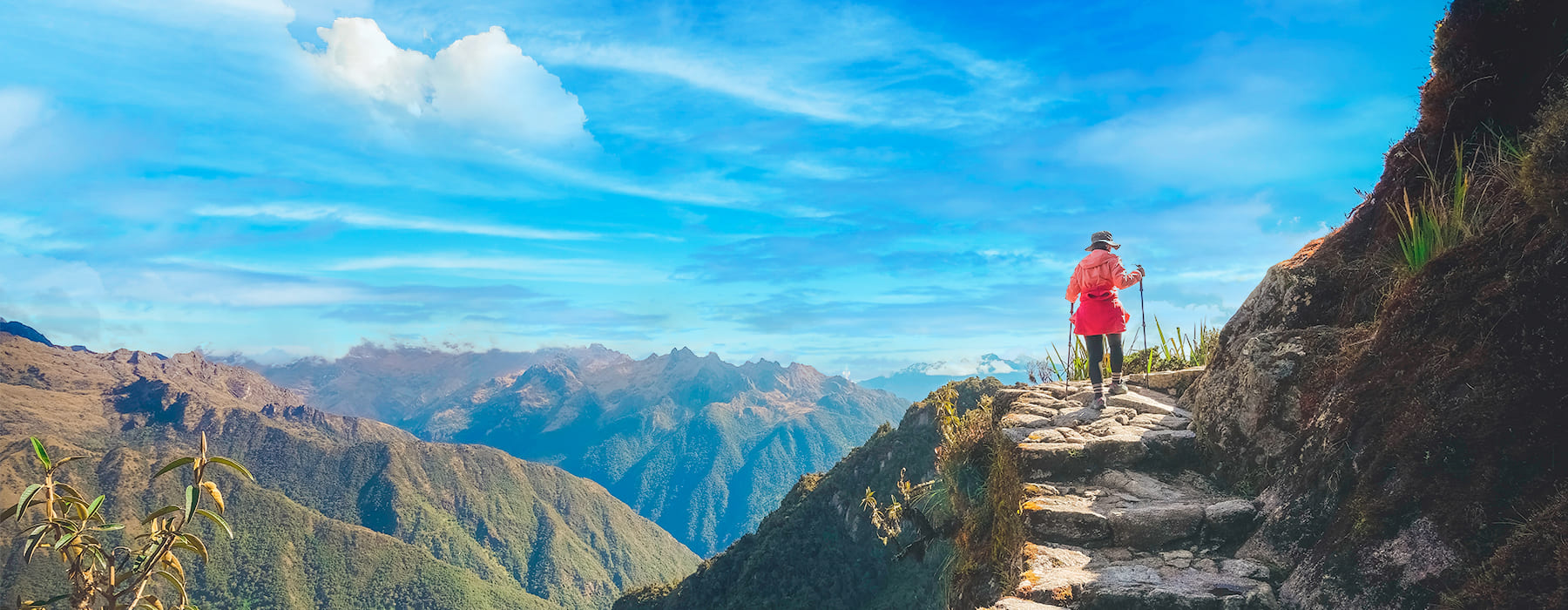
Nuestro estilo de viaje, auténtico, reflexivo y enfocado en construir conexiones significativas con las personas y los lugares que visita, es inherentemente respetuoso y considerado con los destinos que amamos. Diseñamos cada aspecto de tu viaje exactamente como lo quieres, lo que incluye su sostenibilidad. Eso podría significar elegir un viaje en tren en lugar de un avión, hospedarse en albergues de vida silvestre ecológicos u optar por experiencias que retribuyan a las comunidades que está visitando. La decisión es tuya.
Los viajes responsables siempre han estado en el corazón de lo que hacemos. En primer lugar, porque te brinda la mejor experiencia, pero también porque ayuda a preservar las comunidades y los paisajes que visitas. Esto no es nuevo para nosotros, colaboramos con comunidades locales y expertos externos para que podamos crecer y convertirnos en mejores embajadores.
Las experiencias más auténticas e interesantes a menudo benefician directamente a la población local. Preferimos comprar productos locales que se producen en las fincas orgánicas del Valle Sagrado, también tenemos alianzas con organizaciones locales de artesanos que nos brindan artículos de recuerdo para nuestros clientes, tu dinero beneficia directamente a la economía local.
Nuestro estilo de viaje, auténtico, reflexivo y enfocado en construir conexiones significativas con las personas y los lugares que visita, es inherentemente respetuoso y considerado con los destinos que amamos. Diseñamos cada aspecto de tu viaje exactamente como lo quieres, lo que incluye su sostenibilidad. Eso podría significar elegir un viaje en tren en lugar de un avión, hospedarse en albergues de vida silvestre ecológicos u optar por experiencias que retribuyan a las comunidades que está visitando. La decisión es tuya.
Los viajes responsables siempre han estado en el corazón de lo que hacemos. En primer lugar, porque te brinda la mejor experiencia, pero también porque ayuda a preservar las comunidades y los paisajes que visitas. Esto no es nuevo para nosotros, colaboramos con comunidades locales y expertos externos para que podamos crecer y convertirnos en mejores embajadores.
Las experiencias más auténticas e interesantes a menudo benefician directamente a la población local. Preferimos comprar productos locales que se producen en las fincas orgánicas del Valle Sagrado, también tenemos alianzas con organizaciones locales de artesanos que nos brindan artículos de recuerdo para nuestros clientes, tu dinero beneficia directamente a la economía local.
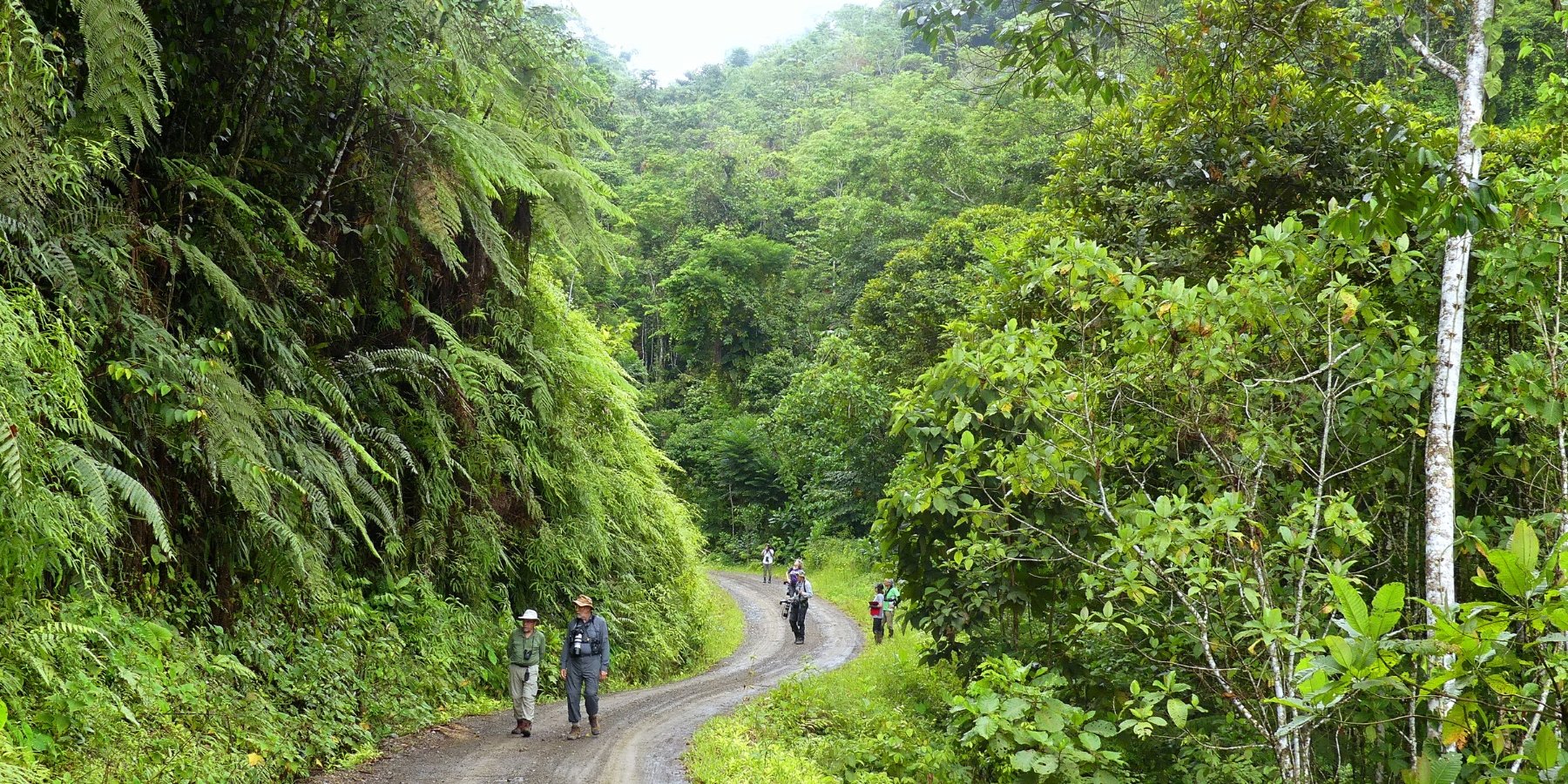
“Hay un dicho: no heredamos la Tierra de nuestros antepasados, la tomamos prestada de nuestros hijos. Cuando te mostramos nuestro país, esta filosofía guía todo lo que hacemos. Es nuestra responsabilidad preservar el medio ambiente y la vida silvestre, y apoyar a las comunidades. Eso significa utilizar modos de transporte más lentos, como la bicicleta, emplear a personas locales y trabajar con las comunidades que se beneficiarán directamente de su visita. Esto también le brinda la mejor y más auténtica impresión de los lugares que queremos compartir con usted.
Preferimos comprar productos locales en bolsas ecológicas, para evitar el uso de bolsas plásticas, así mismo enseñamos el uso de jabones y productos ecológicos en cada tour que organizamos. También trabajamos en proyectos de reforestación con comunidades locales que cuidan los recursos paisajísticos como reservas comunales, parques nacionales.
“Hay un dicho: no heredamos la Tierra de nuestros antepasados, la tomamos prestada de nuestros hijos. Cuando te mostramos nuestro país, esta filosofía guía todo lo que hacemos. Es nuestra responsabilidad preservar el medio ambiente y la vida silvestre, y apoyar a las comunidades. Eso significa utilizar modos de transporte más lentos, como la bicicleta, emplear a personas locales y trabajar con las comunidades que se beneficiarán directamente de su visita. Esto también le brinda la mejor y más auténtica impresión de los lugares que queremos compartir con usted.
Preferimos comprar productos locales en bolsas ecológicas, para evitar el uso de bolsas plásticas, así mismo enseñamos el uso de jabones y productos ecológicos en cada tour que organizamos. También trabajamos en proyectos de reforestación con comunidades locales que cuidan los recursos paisajísticos como reservas comunales, parques nacionales.

Explora el santuario de Machu Picchu, junto a nuestros guías locales, descubrirás los mayores tesoros y secretos de esta maravilla de los Incas. Andean Great Treks es un operador local especializado en organizar los mejores viajes a Machu Picchu.

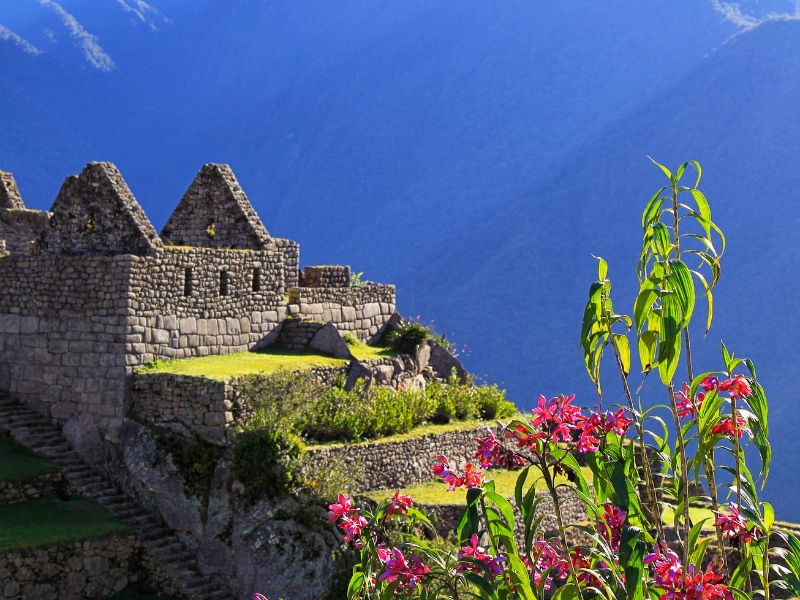
Explora una de las 7 maravillas del Mundo Machu Picchu al atardecer, cuando no hay aglomeraciones, y con buenas vistas. Conozca la verdadera historia de los Incas con nuestros guías locales, en un servicio personalizado.

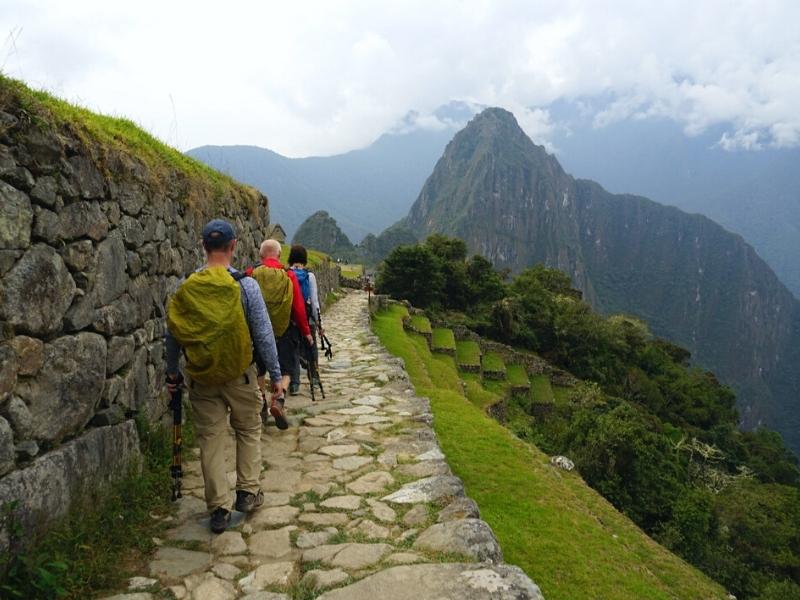
Descubre la maravilla mundial de Machu Picchu desde el Valle Sagrado de los Incas. Viaja en tren hasta el pueblo de Aguas Calientes donde pasaras una cómoda noche disfrutando de la mejor comida peruana.
